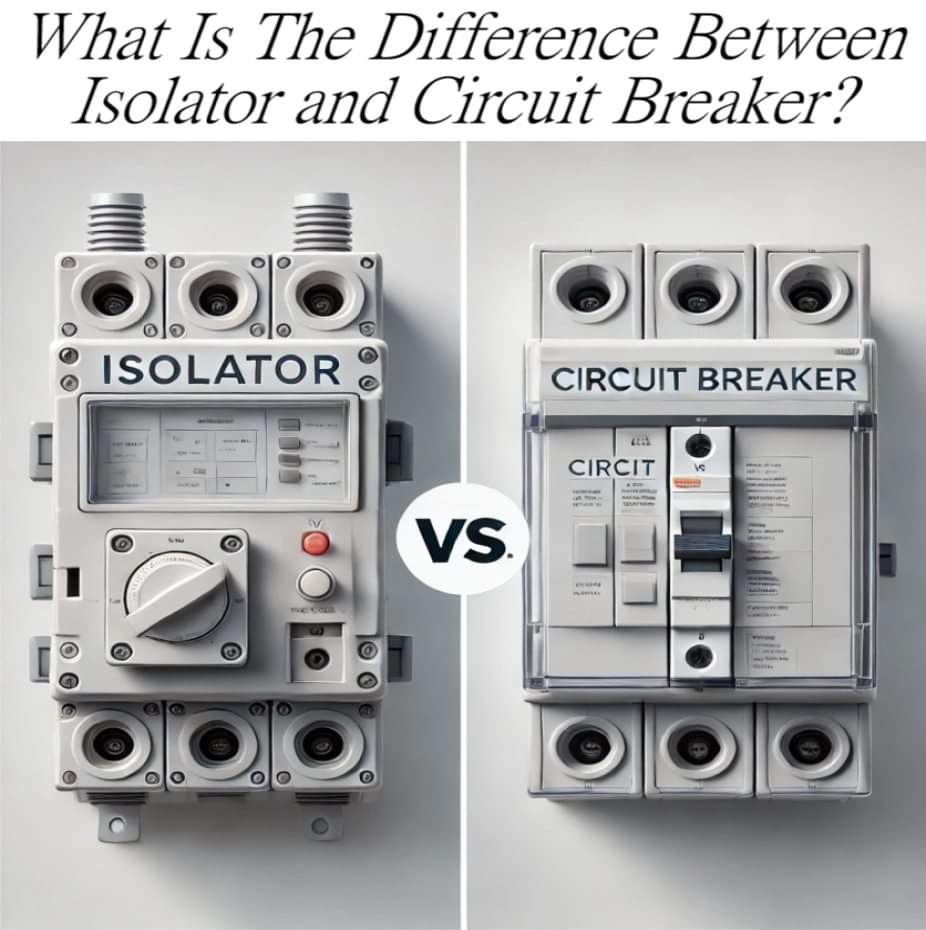1. Isolator:
Function: An isolator is a mechanical switch used to ensure that a circuit is completely disconnected from the power supply for maintenance or safety purposes. It is used primarily in the "off" state and operates only when there is no current flowing through the circuit.
Operation: It is a manual switch and does not interrupt current flow under fault conditions. It is typically used in conjunction with a circuit breaker.
Location: It is often installed on the outgoing side of a circuit breaker to isolate parts of the system for maintenance or repair.
Safety: Provides safety by ensuring that the circuit is fully de-energized before work begins.
2. Circuit Breaker:
Function: A circuit breaker is an automatic switch that is designed to protect the electrical circuit from damage caused by overcurrent, short circuits, or other fault conditions. It automatically interrupts the current flow when it detects a fault.
Operation: It can interrupt current flow while the system is under load, and it works automatically without human intervention.
Location: It is installed in the power distribution system to protect electrical equipment from overload or faults.
Safety: Provides protection by automatically breaking the circuit during fault conditions (like overloads or short circuits) to prevent damage.
In summary, an isolator is for safely disconnecting a circuit when no current is flowing, while a circuit breaker automatically cuts off the current in case of an electrical fault to protect the system.






No comments:
Post a Comment